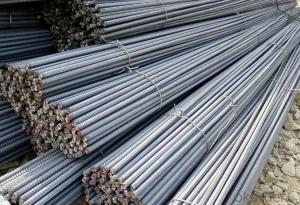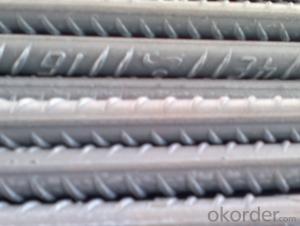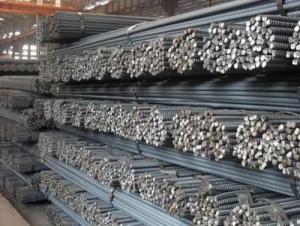Hot Rolled Steel Rebars EN Standard in High Quality
- Loading Port:
- Tianjin
- Payment Terms:
- TT or LC
- Min Order Qty:
- 100 m.t.
- Supply Capability:
- 10000 m.t./month
OKorder Service Pledge
OKorder Financial Service
You Might Also Like
OKorder is offering Hot Rolled Steel Rebars EN Standard in High Quality at great prices with worldwide shipping. Our supplier is a world-class manufacturer of steel, with our products utilized the world over. OKorder annually supplies products to African, South American and Asian markets. We provide quotations within 24 hours of receiving an inquiry and guarantee competitive prices.
Product Applications:
Hot Rolled Steel Rebars EN Standard in High Quality are ideal for structural applications and are widely used in buildings, bridges, roads and other engineering construction. Big to highways, railways, bridges, culverts, tunnels, public facilities such as flood control, dam, small to housing construction, beam, column, wall and the foundation of the plate, deformed bar is an integral structure material..
Product Advantages:
OKorder's Hot Rolled Steel Rebars EN Standard in High Quality are durable, strong, and wide variety of sizes.
Main Product Features:
· Premium quality
· Prompt delivery & seaworthy packing (30 days after receiving deposit)
· Can be recycled and reused
· Mill test certification
· Professional Service
· Competitive pricing
Product Specifications:
Standard | GB UK USA | HRB335 HRB400 HRB500 G460B, B500A, B500B,B500C GR40, GR60 | |
Diameter | 6mm,8mm,10mm,12mm,14mm,16mm,18mm,20mm, 22mm,25mm,28mm,32mm,36mm,40mm,50mm | ||
Length | 6M, 9M,12M or as required | ||
Invoicing | Actual or Theoretical Weight Basis as buyer’s request. | ||
Type | Hot rolled steel rebar | ||
FAQ:
Q1: Why buy Materials & Equipment from OKorder.com?
A1: All products offered byOKorder.com are carefully selected from China's most reliable manufacturing enterprises. Through its ISO certifications, OKorder.com adheres to the highest standards and a commitment to supply chain safety and customer satisfaction.
Q2: How do we guarantee the quality of our products?
A2: We have established an advanced quality management system which conducts strict quality tests at every step, from raw materials to the final product. At the same time, we provide extensive follow-up service assurances as required.
Q3: How soon can we receive the product after purchase?
A3: Within three days of placing an order, we will arrange production. The normal sizes with the normal grade can be produced within one month. The specific shipping date is dependent upon international and government factors, the delivery to international main port about 45-60days.
Images:
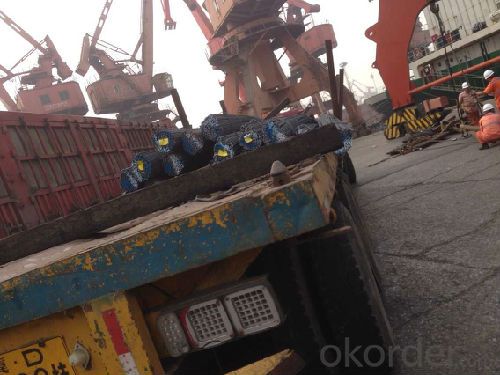
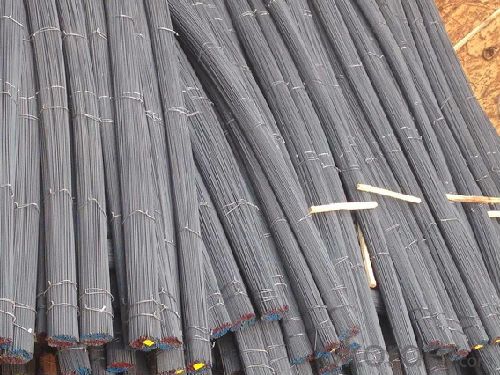
- Q:How are steel rebars classified based on grades?
- Steel rebars are classified based on grades according to their yield strength and tensile strength. The grades range from 40 to 60, with higher numbers indicating higher strength.
- Q:What are the different methods for reinforcing concrete with steel rebars?
- Different methods exist for reinforcing concrete with steel rebars, each serving a specific purpose and offering varying levels of strength and durability. 1. Traditional Reinforcement: Horizontal and vertical steel rebars are placed within the concrete structure, typically forming a grid pattern. Wire or metal ties are used to secure the rebars at intersections. This method is commonly employed for general reinforcement in slabs, walls, and columns. 2. Pre-stressed Reinforcement: Prior to embedding in the concrete, steel rebars are pre-tensioned. Hydraulic jacks are used to stretch the rebars, anchoring them to the structure's foundation. The tension in the rebars counteracts the tensile forces experienced by the concrete under load, increasing strength and crack resistance. 3. Post-tensioned Reinforcement: Similar to pre-stressed reinforcement, this method involves tensioning steel rebars after the concrete has hardened. Ducts or sleeves are placed within the concrete before pouring, through which the rebars are threaded. Once the concrete has cured, hydraulic jacks are used to tension the rebars, applying compressive force and enhancing overall strength and load-bearing capacity. 4. Fiber Reinforced Concrete: Rather than traditional steel rebars, fibers made of steel, glass, synthetic materials, or natural fibers can be added to the concrete mix. These fibers act as a secondary reinforcement system, providing additional strength and durability. Fiber reinforced concrete is commonly used in industrial floors, bridge decks, and pavements. 5. Shotcrete Reinforcement: Shotcrete involves spraying a wet mix of concrete and steel fibers onto a surface using a high-pressure hose. This technique is often employed in slope stabilization, tunnel linings, and underground constructions. The steel fibers in the shotcrete provide reinforcement and enhance the structural integrity of the sprayed concrete. Ultimately, the choice of reinforcement method depends on the specific project requirements, including the structure type, expected loads, and desired durability. By selecting the appropriate method, engineers can ensure that the reinforced concrete structure possesses the necessary strength and resilience to withstand intended use and environmental conditions.
- Q:What are the guidelines for proper placement of steel rebars in concrete structures?
- The proper placement of steel rebars in concrete structures is essential to ensure the structural integrity and durability of the construction. Here are some guidelines to follow for the correct placement of rebars: 1. Design Considerations: The first step is to refer to the structural drawings and specifications provided by the engineer. These documents will outline the required rebar sizes, spacing, and any specific details or arrangements needed for the project. 2. Rebar Size and Spacing: The size and spacing of rebars are determined based on the structural requirements and load-bearing capacity of the concrete structure. The diameter and spacing of the rebars should adhere to the design specifications to provide adequate reinforcement. 3. Concrete Cover: The concrete cover refers to the distance between the outer surface of the rebar and the edge of the concrete. This cover protects the rebars from corrosion and provides fire resistance. It is crucial to maintain the specified concrete cover to ensure the longevity of the rebars. 4. Lap Length: In cases where rebars need to be spliced or joined together, a lap length is specified. The lap length ensures sufficient overlap for the transfer of stress between the rebars and prevents any weak points in the structure. 5. Alignment and Positioning: Rebars should be properly aligned and positioned within the concrete formwork. They should be placed in the center of the concrete section to effectively resist tension and compression forces. The use of spacers or chairs can help maintain the desired rebar position during the pouring and setting of the concrete. 6. Clearances and Edge Distance: Adequate clearances must be maintained between rebars to allow for proper concrete flow during casting. Similarly, minimum edge distances should be maintained to prevent rebar corrosion and ensure proper concrete cover. 7. Tying and Fixing: Rebars should be securely tied and fixed at intersections to prevent displacement during concrete placement. Properly tying the rebars using wire or approved connectors helps maintain their position and ensures the structural integrity of the concrete. 8. Inspection and Quality Control: Regular inspections should be conducted during the concrete pouring process to verify that the rebars are placed correctly and according to the design specifications. Any deviations or discrepancies should be addressed promptly to avoid compromising the structural integrity of the concrete structure. By following these guidelines, construction professionals can ensure the proper placement of steel rebars in concrete structures, resulting in safe and durable constructions that can withstand the design loads and provide long-term structural stability.
- Q:Can steel rebars be used in water treatment facilities?
- Yes, steel rebars can be used in water treatment facilities. Steel rebars, or reinforcing bars, are commonly used in construction projects to strengthen concrete structures. In water treatment facilities, where concrete is used for various structures such as tanks, basins, and pipelines, steel rebars are often incorporated to provide added strength and durability. Water treatment facilities involve the treatment of water to make it safe for consumption or other purposes. Concrete is a preferred material in these facilities due to its ability to withstand the harsh conditions of water treatment processes, such as exposure to chemicals, high temperatures, and pressure. Steel rebars are essential in reinforcing the concrete structures to ensure they can withstand these demanding conditions. The corrosion resistance of steel rebars is a critical factor to consider when using them in water treatment facilities. Since water treatment facilities often involve the use of chemicals and exposure to moisture, it is important to choose rebars that have appropriate corrosion protection. This can be achieved by using stainless steel rebars or by applying protective coatings to the rebars. It is also worth noting that proper design, construction, and maintenance practices are essential in ensuring the long-term performance of steel rebars in water treatment facilities. Adequate cover thickness, concrete quality, and proper installation techniques are important considerations to prevent corrosion and ensure the rebars provide the desired structural integrity. In conclusion, steel rebars can be effectively used in water treatment facilities to reinforce concrete structures and provide the necessary strength and durability. However, it is important to choose corrosion-resistant rebars and adhere to proper design and construction practices to ensure their long-term performance in these facilities.
- Q:How do steel rebars help in reducing construction time?
- Steel rebars contribute to the reduction of construction time in several ways. Firstly, they enhance the strength and durability of concrete structures, enabling builders to employ quicker construction techniques. This obviates the necessity for slower and more time-consuming methods as the rebars provide sufficient support for the structure's weight. Secondly, the reinforcement of concrete with steel rebars enhances the overall structural integrity of the building. Consequently, builders can employ thinner concrete sections without compromising the structure's strength. These thinner sections require less material and can be poured and cured more rapidly and easily, thus saving construction time. Thirdly, the installation of steel rebars is a speedy process due to their easy handling and installation characteristics. They can be conveniently cut and bent to fit the desired shape and size, facilitating efficient installation. Consequently, the requirement for complicated and time-consuming formwork is eliminated, resulting in a reduction in construction time. Fourthly, steel rebars offer design and construction flexibility, enabling the utilization of innovative and efficient building techniques. They can be utilized in a variety of applications, including beams, columns, and slabs, granting architects and engineers the freedom to design structures that can be rapidly and efficiently constructed. Lastly, steel rebars provide additional resistance to natural disasters such as seismic activity and extreme weather conditions. By reinforcing concrete with rebars, structures become more resilient, reducing the risk of damage and expediting the construction process. This is particularly crucial in areas that are prone to earthquakes or adverse weather conditions. In conclusion, steel rebars play a pivotal role in reducing construction time by providing strength, durability, flexibility, ease of installation, and the ability to reinforce concrete structures. These qualities facilitate faster construction methods and efficient use of materials.
- Q:How do steel rebars provide reinforcement to concrete?
- Steel rebars provide reinforcement to concrete by adding strength and durability to the structure. When embedded within the concrete, rebars act as tension members, resisting forces that would otherwise cause cracking or failure. The high tensile strength of steel rebars helps to distribute and absorb load, enhancing the overall structural integrity of the concrete.
- Q:Are steel rebars suitable for reinforcement in historical buildings?
- Yes, steel rebars are suitable for reinforcement in historical buildings. They provide strength and durability to the structure, enhancing its stability and longevity. Additionally, steel rebars can be designed and installed while minimizing visual impact, preserving the historical aesthetics of the building.
- Q:What are the standard sizes of steel rebars?
- The standard sizes of steel rebars typically range from 6mm to 50mm in diameter.
- Q:How do steel rebars contribute to the seismic performance of concrete buildings?
- Steel rebars contribute to the seismic performance of concrete buildings by providing reinforcement and strength to the structure. The rebars help to distribute and dissipate the energy generated during an earthquake, increasing the building's ability to withstand the seismic forces. They enhance the concrete's tensile strength, preventing cracking and enhancing its overall durability. The combination of concrete and steel rebars creates a composite material that can absorb and withstand the lateral forces caused by ground shaking, reducing the risk of structural failure during seismic events.
- Q:How do steel rebars impact the durability of concrete structures?
- Steel rebars greatly enhance the durability of concrete structures by adding tensile strength and preventing cracking or failure under stress. The rebars reinforce the concrete, allowing it to withstand heavy loads, seismic forces, and temperature variations, thereby significantly extending the lifespan and structural integrity of the concrete.
1. Manufacturer Overview |
|
|---|---|
| Location | |
| Year Established | |
| Annual Output Value | |
| Main Markets | |
| Company Certifications | |
2. Manufacturer Certificates |
|
|---|---|
| a) Certification Name | |
| Range | |
| Reference | |
| Validity Period | |
3. Manufacturer Capability |
|
|---|---|
| a)Trade Capacity | |
| Nearest Port | |
| Export Percentage | |
| No.of Employees in Trade Department | |
| Language Spoken: | |
| b)Factory Information | |
| Factory Size: | |
| No. of Production Lines | |
| Contract Manufacturing | |
| Product Price Range | |
Send your message to us
Hot Rolled Steel Rebars EN Standard in High Quality
- Loading Port:
- Tianjin
- Payment Terms:
- TT or LC
- Min Order Qty:
- 100 m.t.
- Supply Capability:
- 10000 m.t./month
OKorder Service Pledge
OKorder Financial Service
Similar products
New products
Hot products
Hot Searches
Related keywords








